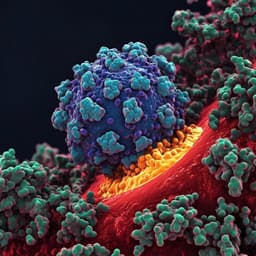
Medicine and Health
The spike gene is a major determinant for the SARS-CoV-2 Omicron-BA.1 phenotype
M. P. Alves, C. G. Benaraï, et al.
Discover how Omicron-BA.1 compares to VOC Delta in human cells and animal models in this intriguing study by Marco P. Alves, Charles Gérard Benaraï, Martin Beer, and Volker Thiel. The research reveals Omicron's enhanced replication in nasal cells but limited in bronchial ones, raising questions about its immune evasion strategies.
Playback language: English
Related Publications
Explore these studies to deepen your understanding of the subject.







